Kids Gardening Tips | Teaching Your Children to Grow Their Own Garden
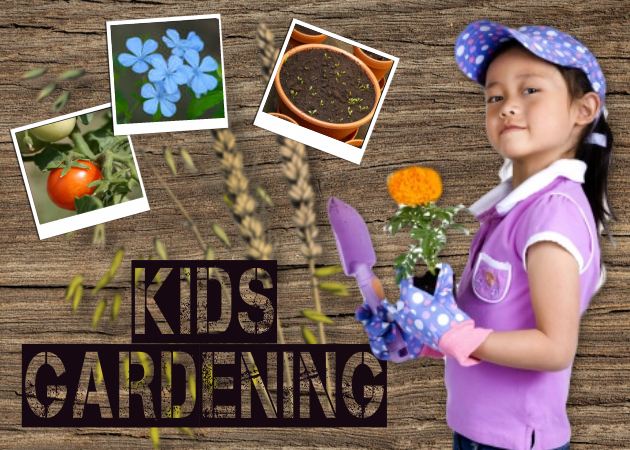
In this online guide of kids gardening tips we want to share simple strategies and lessons to help children learn how to grow their own food, and develop skills they can use their whole lifetime.
Children can learn so much when they garden. Not just about the process of gardening either, but about life cycles, water conservation, tending to chores, following directions, and so much more.
Gardening is such a well-rounded teaching tool not only for science, but also in life lessons. You will be surprised at just how much gardening can teach a child!
Kids Become Eager to Learn
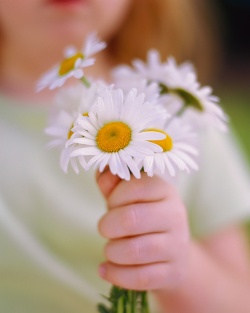
Children who garden are often much more ready and willing to learn.
It gives them greater control over their own education and makes them more active seekers of knowledge.
It also helps teach them problem solving skills.
Gardening can help children take the academic and turn it into real world experiences.
It makes children much more inquisitive and with this great eagerness to learn it makes it much easier to teach the basics within education.
Because of the ever-changing circumstances of gardening (such as weather changes and plant disease), it teaches children to think on their feet - making them more flexible and easier to learn problem solving skills.
Gardening Makes Children Stronger
Resiliency is important for children to have. Gardening can boost a child's self-esteem, teach children the ability to cope with life's ups and downs, and improve concentration.
Through many gardening setbacks (crop damage due to insects, failed crops, or weather), children become more resilient.
They are forced to deal with these problems and move forward to achieve their ultimate goals.
Children can more easily concentrate when working with a garden, making it easier to teach them many different lessons.
Learning the life cycle of plants, water conservation, and even the effects of the sun on plant life are easily taught to children through the garden and during gardening.
Gardening Teaches Kids Responsibility

A lot of work goes into gardening. Watering and weeding are both important parts of keeping a garden alive.
So this will help children see the importance of doing these chores if they want a healthy growing garden.
Beyond that, responsible eating choices can be made through gardening.
Children are more willing to try vegetables that they have grown with their own two hands. So they can discover a love for many foods they might never have tried before.
Since gardening often requires tools and chemicals we might not normally want our children to have, we can take this time to teach them how to be careful with these items.
What it is the chemicals do to help the plants, but how they can be harmful to us and the importance of washing our hands thoroughly after working.
But also sharp tools are not toys and gardening is a great way to teach children how to responsibly use tools.
Once crops are grown children can learn about the business of selling crops.
Teach them the responsibility of budgeting money and negotiating prices. These are early job skills learned right there in your own back yard.
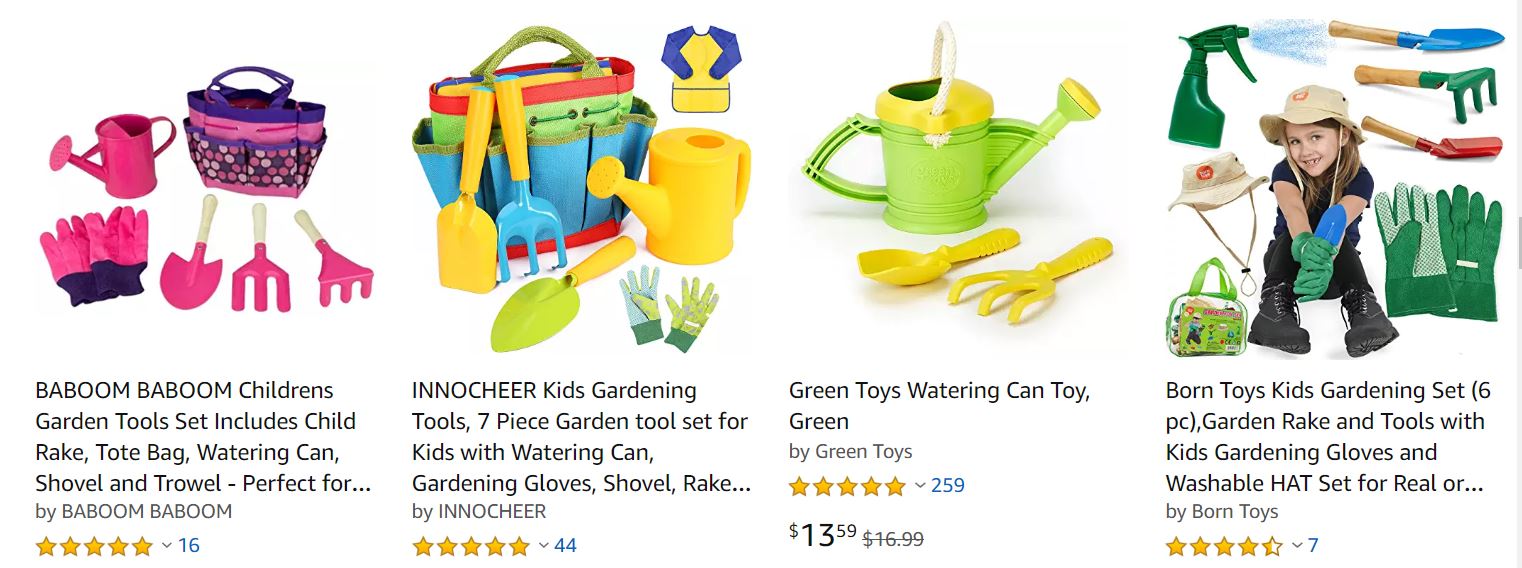
Learning about the science behind a garden is only a very small part of what gardening can teach children.
Life skills and a willingness to learn are things gardening can open up to a child's life.
So take advantage of these teaching opportunities and grow a garden with your children.
Teaching Your Kids to Grow Their Own Garden
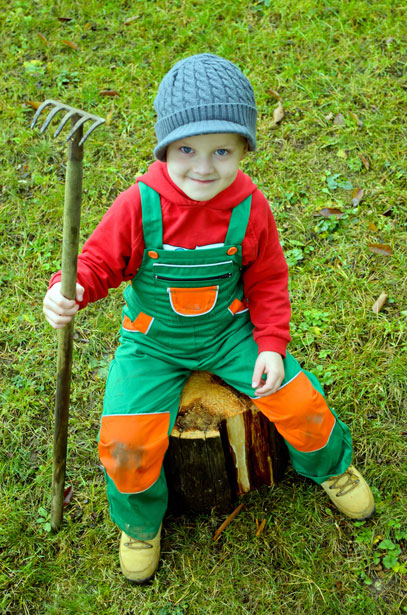
Whether it's a garden of fruits and vegetables that they get to eat, or just pretty flowers that they get to nurture and watch grow, it's a great learning opportunity for children.
Taking things from seed to flower has so many lessons that can be taught, practical and educational.
So here's how to teach kids to grow their own garden.
1. Get them interested
The interest has to be there for gardening before you even start.
It's not too hard to get kids interested.
Just show them what it's all about. Show them the way a seed turns from a seed into a plant.
You can even go with the gross angle if it will work with your child.
Sometimes the bugs and creepy crawlies will really draw a child in.
Know your child's interests and play to that.
It will make it fun and your child will really get into it.
2. Get the right tools for the job
How fun is anything if the tools you have are too big or too small for you to use? It's just frustrating.
Get your child his (her) own gardening tools - gloves, aprons, rake, shovel, watering can, etc.
Make sure it's kid sized and bright colors will really draw them in.
You might even want to let your child pick out his own tools.
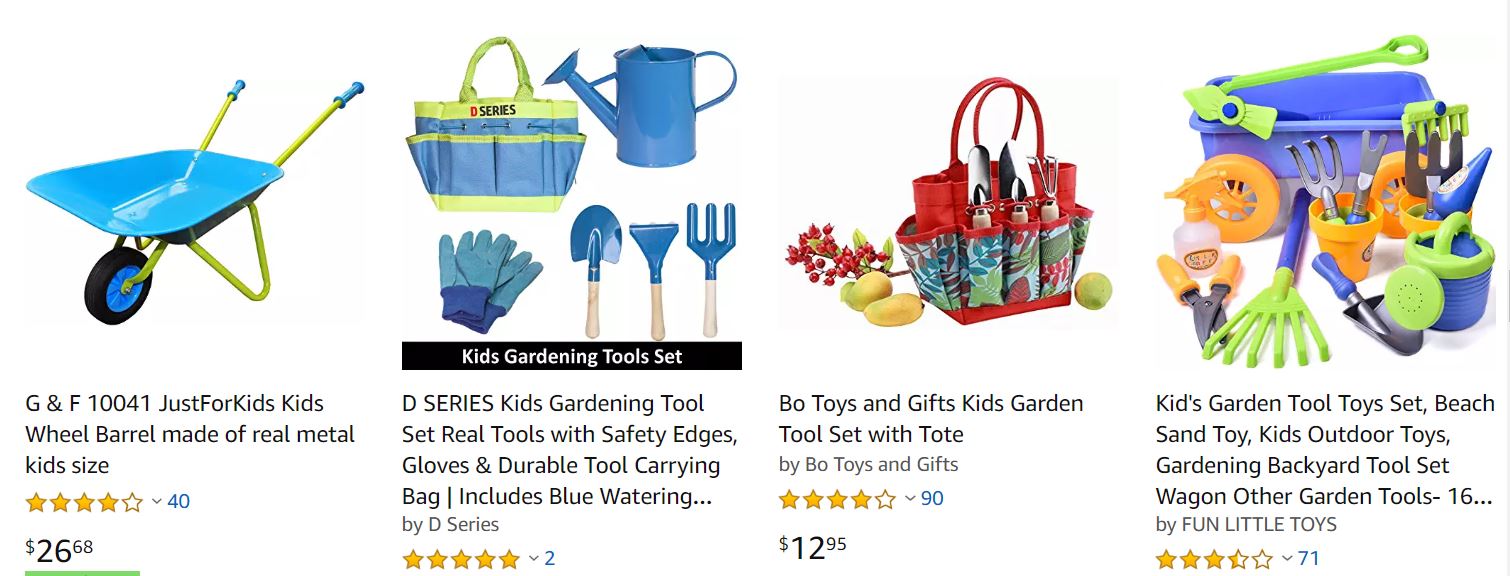
3. Begin growing things that are easy to grow
Let your child be involved in the decision making on what to grow, but help steer him in the direction of things that are easier for beginners to grow.
You might not want something that's going to take a long harvest time because a child will lose interest if he doesn't see the fruits of his labor quickly.
Here are some great suggestions of what you could try with your beginner gardener:
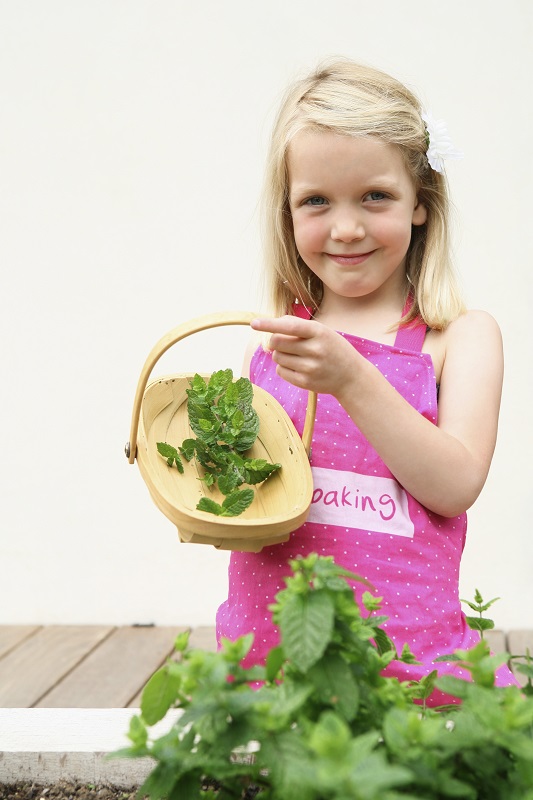
• Tomatoes
• Sunflowers
• Marigolds
• Squash
• Radishes
• Peas
• Beans
• Sweet peas
• Pansies
• Poppies
• Lettuce
All of these will be great to try with your beginning gardener.
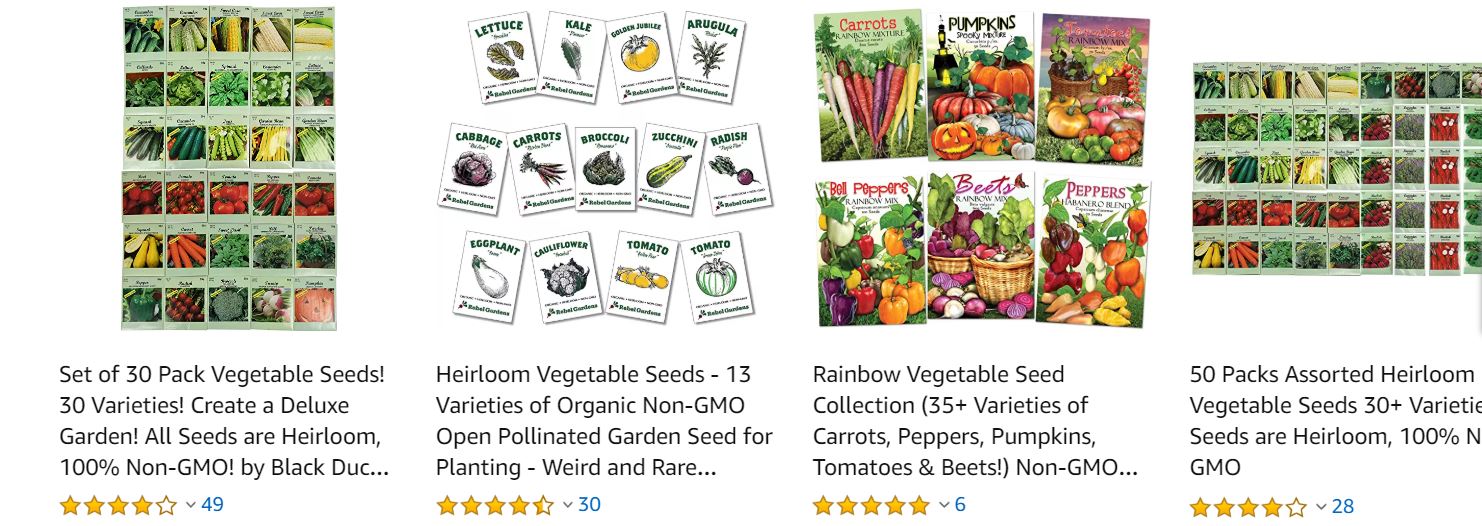
4. Down to the basics
To start out with you don't want to make your child do big jobs like tilling the soil and adding nutrients.
You can do that without him (unless we're talking about an older child who might have an understanding and interest in this sort of thing).
This is stuff that can be taught later, though, after they realize how fun it is to grow their own garden.
So just start out showing them how to plant he seed in the dirt.
You can either plant first in some egg cartons or directly into the ground.
Planting in egg cartons is great for smaller children to keep those seeds in place.
You can put the egg carton right in the ground and it will disintegrate, leaving the seeds in their place to grow and thrive.
5. Be one with all of nature
There is beneficial wildlife to your garden, but there are some creatures you'd like to keep away.
Help your child learn the difference between the two.
And come up with ways to attract the critters you want around to help pollinate your garden and the ones you want to keep away.
6. Show them the magic of gardening
Nothing gets a child more excited than magic. And gardening is a magical thing.
Like if you take the cutting of a begonia plant and replant it another will grow.
This will amaze them and have them wanting to try it with other plants.
7. Decorate
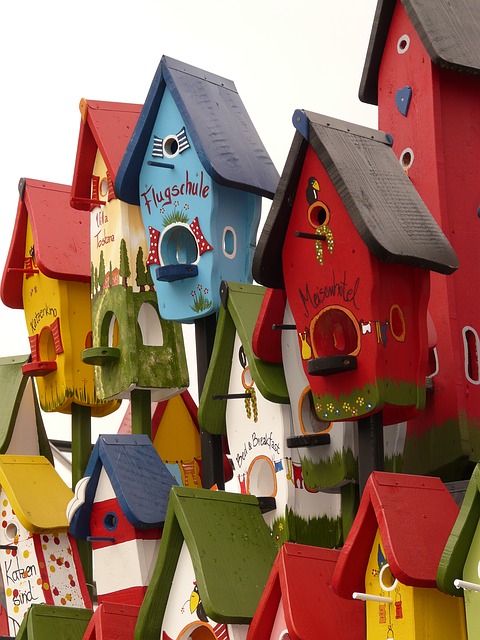
Get creative and use things from around the house to decorate the garden.
Make your own pinwheels to set up around the garden.
Decorate planters for the flowers they grow to be planted in.
Make a bird feeder to go in your garden.
Nothing fancy, but brainstorm with your child to make this garden his own
8. Don't forget to care for the garden
Once the seeds are planted, children need to know that now the real work begins.
We need to be aware of what unwanted vegetation is (weeds) and how to best dispose of it (pulling) to keep what we're trying to grow strong and healthy.
Plenty of water and sunshine will be important to help our newly-planted plants grow healthy and strong.
9. Don't Stop Just Because The Season Change
Keep the garden going year round, even if that means moving it indoors for the time being.
10. Always be enthusiastic
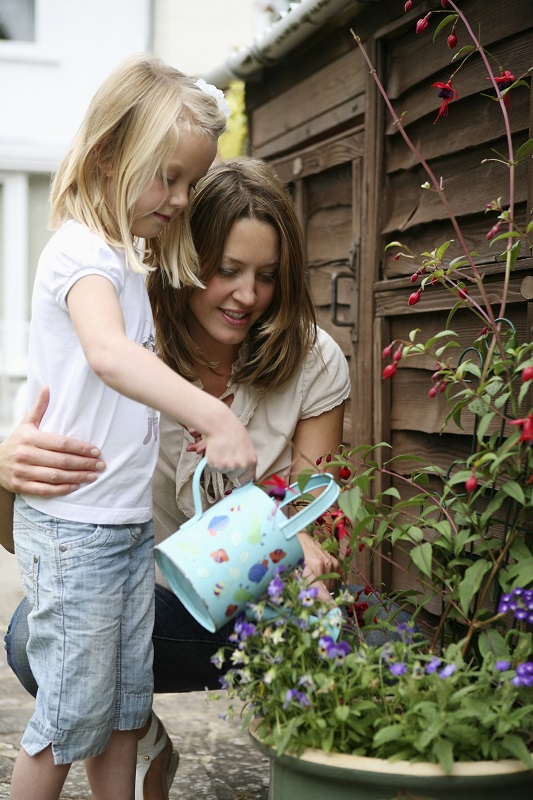
Be willing to try new things with your child.
Before you know if your little gardener is going to be a pro and might even teach you a thing or two.
So get out there and get growing that garden with your kids.
Remember to have fun!
It's not a chore - it's a hobby.
Treat it as such and you'll never get tired of it.
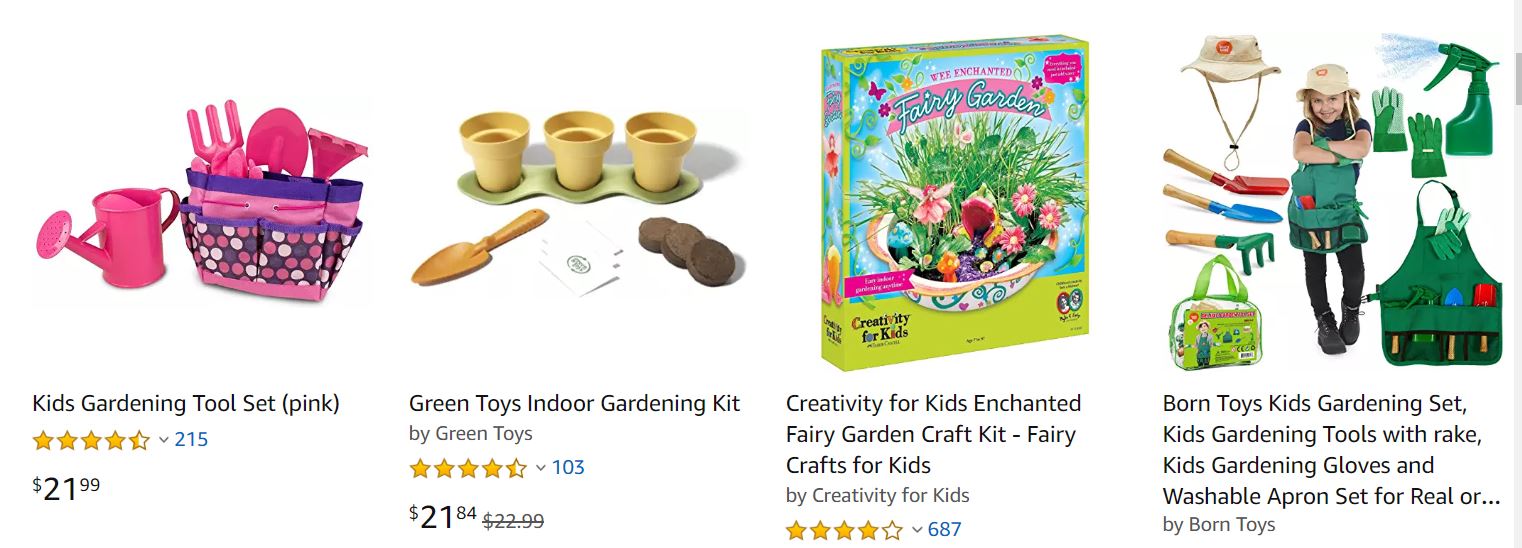
Garden Friendly Critters to Tell Your Kids About
A garden is not without its creepy crawlies.
When you are gardening with your children you'll probably want to let them know what kind of critters they can expect to see in the garden.
Many insects can be very beneficial to helping your garden grow - either by eating those who will ruin a crop or helping to pollinate your crops.
You will want to make your children aware of the friends and foes of the garden insect world.
Here is a short guide of some of the insects you will see in your garden.
Praying Mantis
These are scary looking bugs. They can be hard to see because of how they camouflage themselves against the plants.
But if you pay close attention to areas like the petals of flowers or porch lights, you will see the praying mantis.
Mantises have big appetites. When young they will eat various aphids, leaf hoppers, mosquitoes, caterpillars and other soft-bodied insects.
Later they will eat larger insects, beetles, grasshoppers, crickets, and other pest insects.
Praying mantises are large, slow moving insects that catch their prey with their front legs.
Mantises will ambush their prey by sitting on a plant or twig, waiting for their prey to come close and then will snatch them up.
This is definitely an insect you want around as they eat the bugs which like to eat your garden.
You should keep a close eye out for their eggs as you definitely do not want to disturb them.
It's important to teach your children what the eggs look like. Eggs can often be found on leaves of shrubs and twigs.
You will want to make sure not to place these eggs on the ground as that makes them easy prey for ants.
Find a sheltered location up off the ground for these egg sacs so you can keep plenty of praying mantises in your garden.
Ladybugs | Ladybirds
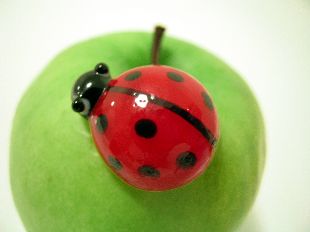
If you have trouble with sap-feeding insects in your yard, then you want to get ladybugs on the job.
Ladybugs are very beneficial in this sense for the garden as they are natural enemies of these sap-sucking insects.
So this is a natural pesticide for these unwanted bugs in your garden.
And they are believed to be good luck as well.
Not only do ladybugs eat many sap-sucking bugs a day, but they also will eat the larvae of many different bugs which are detrimental to the garden.
So these voracious bugs are a must have in any garden.
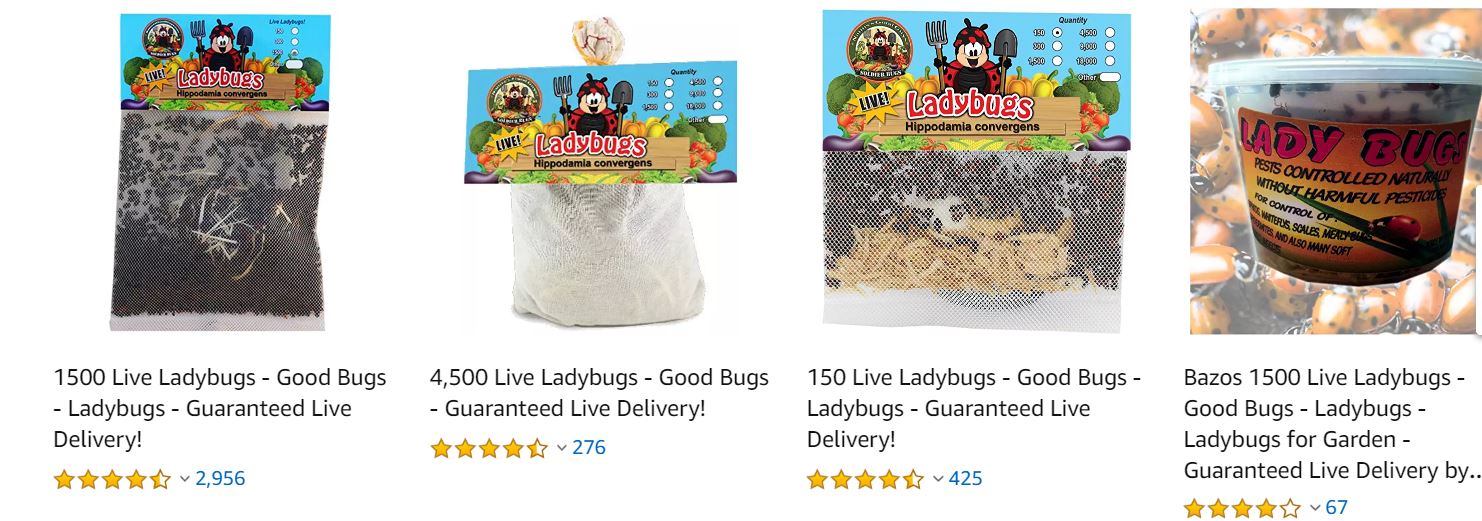
Green Lacewings
The Green Lacewing is widely beneficial in attacking destructive garden insects during its larvae stage. But that doesn't mean they are not still without their use once they become adults.
At this point they help to pollinate your garden by feeding on nectar and honeydew.
But for 1-3 weeks in the larvae stage they are vigorous predators, going after aphids, mites, a wide variety of soft-bodied insects, including insect eggs, thrips, mealybugs, immature whiteflies, and small caterpillars.
The larvae of a lacewing are very small and gray-brown in color. The lacewing larva vigorously attacks its prey, injects a paralyzing venom, and draws out the body fluids of its helpless victim.
The adults can live for about four to six weeks. They will feed on nectar, pollen and honeydew.
In order to continue having these voracious predators laying eggs in your garden, you will want to make sure they have plenty of access to nectar, pollen, and honeydew.
Without these the green lacewings will move on to find their food somewhere else.
You want these insects to remain in your garden, protecting it against its biggest threats.
These three insects are just some of the insects you want to make your children aware of protecting in your garden.
The most natural pesticide you can possibly use are the predators of the insects that threaten your garden.
So learn what these bugs look like and plant what will help keep them around protecting your garden.
Growing Plants in Containers with Kids
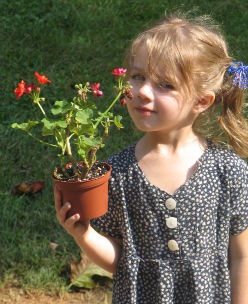
So you want to grow a garden with your kids, but you don't have a yard to do it in.
That means you will need to grow things in containers.
But what grows well in containers that's simple and something kids will enjoy?
Simply put, pretty much any vegetable or herb will grow well in a container as long as there's enough room.
But let's narrow this down to kid friendly.
Here are the ten best plants that you can grow in containers with your children.
* Tomatoes
This is probably the most popular choice for growing in containers.
Tomatoes are easy to grow; they can even be done from a hanging container and grow upside down.
Using good soil and the right amount of water is what's needed to make tomatoes grow well in containers.
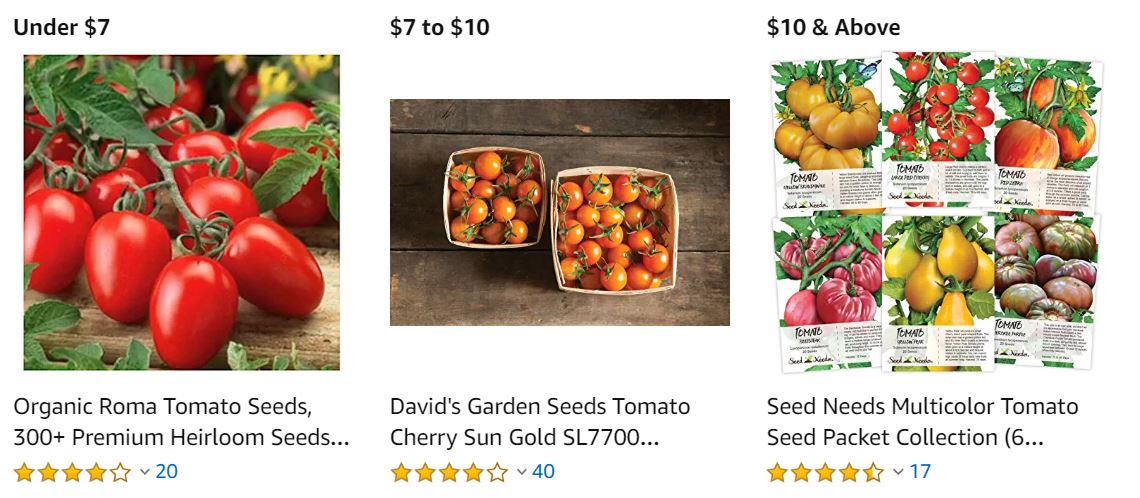
* Potatoes
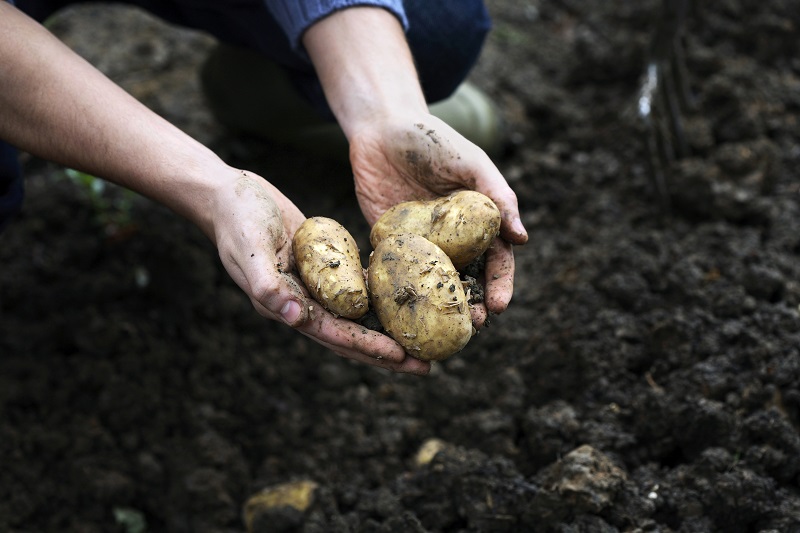
You can grow a large amount of potatoes in containers like compost bags or a large tub.
* Cucumbers
These are easy to grow in containers, but they need the right conditions.
They grow best in warm temperatures so don't plant until early summer for best results.

* Carrots
These are so simple to grow and do really well in containers.
So they're a really great starter vegetable to grow with children.
* Blueberries

These grow well in containers, but only with the right conditions.
They ripen best in heat so they're best saved for the summer.
They require rain water too, so grow them outdoors unless you are able to collect the rain water in something. They won't do well with tap water.
* Parsley
This is great in a window box.
It takes a while to germinate though and requires heat.
Also, be sure to use a rich soil.
* Basil
Put it in the window box with parsley, but be warned: this does not do well at all with cold.
So make sure there is not going to be any frost.
Basil has a few weeks' germination time, though, so it grows quicker than parsley.
* Radish
This is probably the easiest vegetable to grow in a container and will really get the kids excited.
So this is the perfect choice.
* Lettuce
This is actually a great choice for growing in containers.
Water in the morning and make sure it is kept in the shade and you'll have a quick and easy plant in a container in no time.
* Flowers
It doesn't have to be vegetables alone that you plant in containers.
Potted plants such as geraniums, petunias, mums, and sunflowers are great in a pot and something kids will love to help cultivate.
So don't think just because you don't have a lot of room you can't create some sort of garden.
Hanging tomatoes and window boxes with herbs and including some containers on your porch of radishes and potatoes and you're off to a great start -gardening with the kids and getting them to try more fruits and vegetables.
What have you grown in containers before?
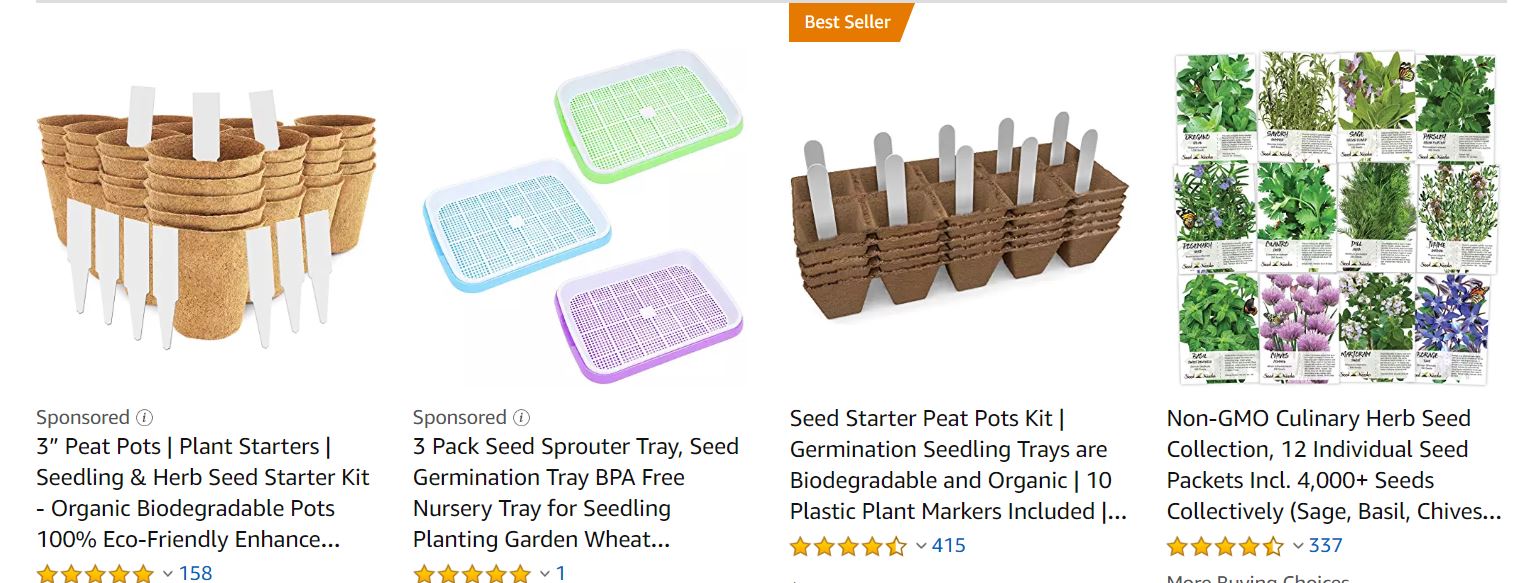
Ten Safe Ways to Remove Garden Pests
There are so many great things when it comes to gardening with kids. You can teach them science lessons and also many life lessons.
But while gardening with the kids you want to take measures to also make sure they are safe.
And removing pests from the garden can lead to some less than safe options to protect your garden from pests.
With that in mind, here are ten safe options to remove garden pests from your home garden.
1. Sprinkle sawdust, ashes, or wood chips around your garden to deter certain pests.
Slugs will not cross this barrier so to keep them out of your garden, lay this stuff along the edges and you'll avoid those pests without having to mess with any materials which will be unsafe for your children to touch.
2. Spray grasshoppers with molasses.
The sweetness attracts them, but it blocks their nasal passages and causes them to suffocate.
You can easily eradicate an entire crop of grasshoppers by just spraying the grasshoppers with molasses whenever you see them.
3. Garlic is not just for vampires.
Planting garlic in your garden or just spraying it with garlic will deter many unwanted insects.
Plant the garlic sporadically amongst your garden to keep those pests at bay.
4. Know the helpful bugs from the destructive bugs.
Keeping bugs like praying mantis, ladybugs, beetles, and spiders in your yard will be a huge help.
They will eat all of those pests which do damage to your crops.
5. Having bats in the yard is not such a bad thing.
Have your kids help you create bat houses to attract bats because they'll come out at night and gobble up all of those nasty bugs you don't want around.
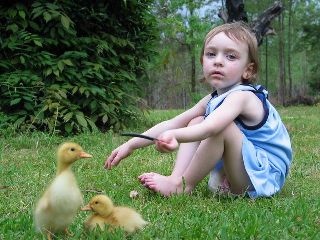
6. Keep ducks and chickens in your yard.
They will eat these destructive insects. Your kids will love having these new pets as well.
They can't just be on a diet of insects, though, so be prepared to feed them seed as well.
Keep them protected in a coop at night so other animals that prey on them don't get them while you sleep.
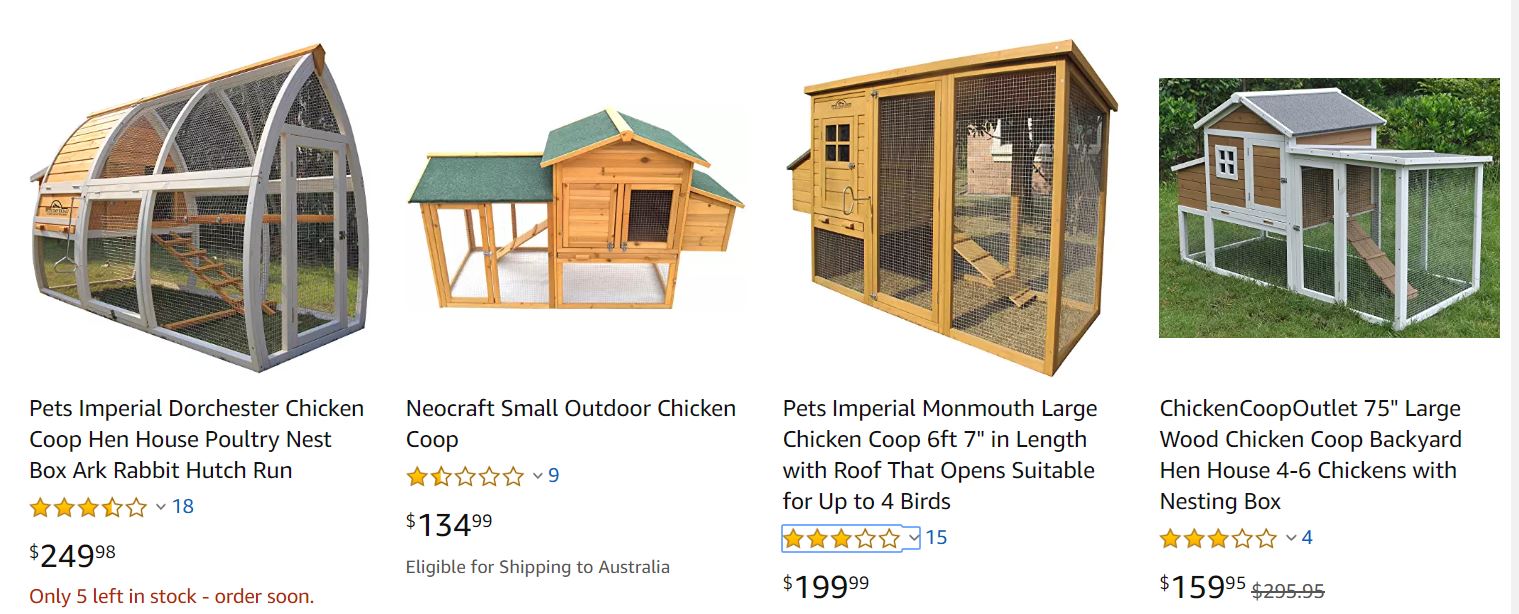
7. For larger pests, use chili powder around your garden.
Capsaicin is the active ingredient in chili powder which will deter things like raccoons, skunks, and opossums.
It won't affect birds or other wanted critters in your yard, just mammals.
You can even use chili powder in your bird seed to keep other animals from eating the seed.
8. Fans, radios, and balloons will deter wildlife.
The movement and noise from these things will frighten this unwanted wildlife from your garden.
9. Plant native to the area plants.
This will deter pests in your yard.
10. Organic gardening.
By following organic gardening techniques such as building a healthy soil, using companion planting, spraying herbal pest sprays, and crop rotation, you can help keep those unwanted critters at bay.
When gardening with your kids there's nothing more important than making sure they are safe out there.
So avoiding toxic chemicals and using these more natural methods for pest control is the way to go.
Animals Your Child May See in a Wildlife Garden
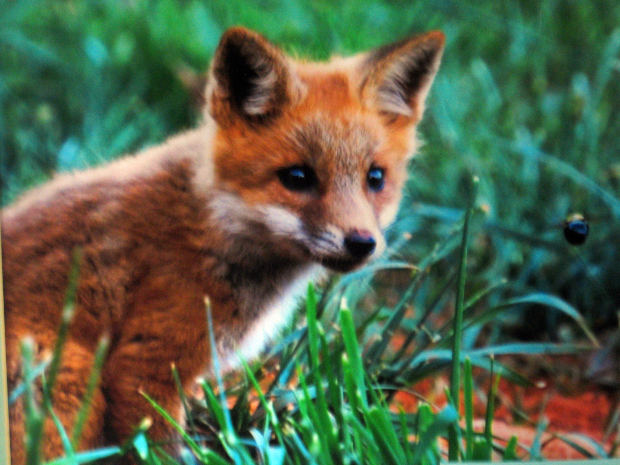
You have built it (the wildlife garden) and now they (the wildlife) are coming.
So what exactly should you be looking for when the wildlife is beginning to make its way into your yard?
The creatures you see in your garden are going to vary greatly based on where you live and what you have planted, but these are some of the critters you can expect to see and what you should plant to see them.
Animals
• Birds (humming birds, hawks, owls, and many other kinds of birds)
• Chipmunks
• Squirrels
• Deer
• Woodchucks
• Raccoons
• Skunks
• Prairie dogs
• Coyote
• Foxes
• Rabbit
• Field mice
• Weasels
Do be careful with the creatures you attract, though. Your neighbors might not be too keen on coyote and foxes wandering around their neighborhood.
But if you live in an area where that won't be likely to be a huge concern, then planting grass and seeds will attract these animals as well as many of the others on this list.
Evergreens provide cover from predators and shelter and nest.
And since it will live year round you are likely to see more of this wildlife in your yard even during the winter months.
Trees and shrubs grow fruit and other food for many of these animals.
Vines, flowers, vegetables, and other plants will also provide food for all of these animals.
Some of these animals are nocturnal so you aren't likely to see them during the day (skunks and raccoons).
If you do see one of these animals during the day hours, then do not approach it and make sure to call your local animal control.
But if you were hoping to see more than just these animals in your yard, don't worry; you'll attract smaller creatures as well.
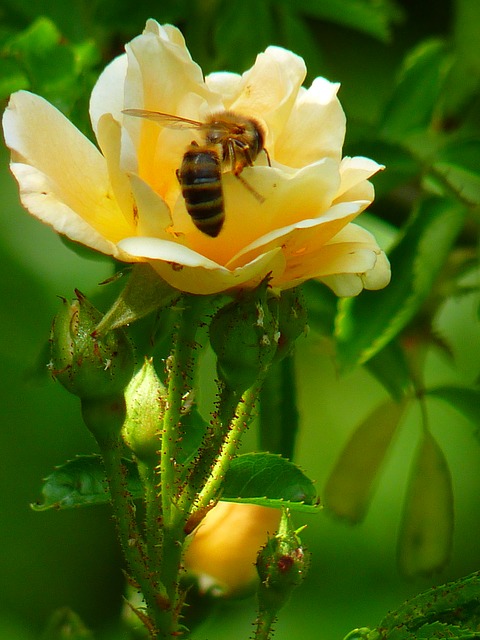
Insects/Reptiles
• Butterflies
• Ladybugs
• Bees
• Slugs
• Worms
• Snakes
• Frogs
• Lizards
There are many other reptiles and insects you might end up seeing in your wildlife garden.
As long as you supply a great water source and plenty of flowers with pollen, you will see many of these different kinds of creatures in your yard.
So do step carefully through the brush in your yard and keep your eyes peeled for the slithering snakes and earthworms burrowing into the soil.
Don't be startled to see lizards and frogs hanging out by your water source.
And don't be surprised to see butterflies and bees buzzing and fluttering about on the bright and beautiful flowers you have planted.
It will be a utopia of learning about all sorts of animals and how they use the garden you have planted for food and shelter.
So take the kids outside with a camera and notebook and see what you can capture the wildlife doing in your garden.
What wildlife have you seen in your wildlife garden?

Important!
Planting anything with kids can be a whole lot of fun and very educational.
Getting kids to eat more vegetables, then planting some sort of garden will be a huge help in that.
Letting them get their hands dirty and eating the food they make is a huge incentive for even the pickiest of eaters.
Continue to Research
A lot of times finding it difficult to get kids away from their electronic screens and gadgets is the result of a lack of knowledge or understanding about what will tempt children away from the house and into the sunlight and fresh air and wanting to play in the dirt.
A bit of thought about ways you can get useful kids gardening tips will give you tons of thoughtful ideas for keeping your children interested in growing their own food and helping the environment.
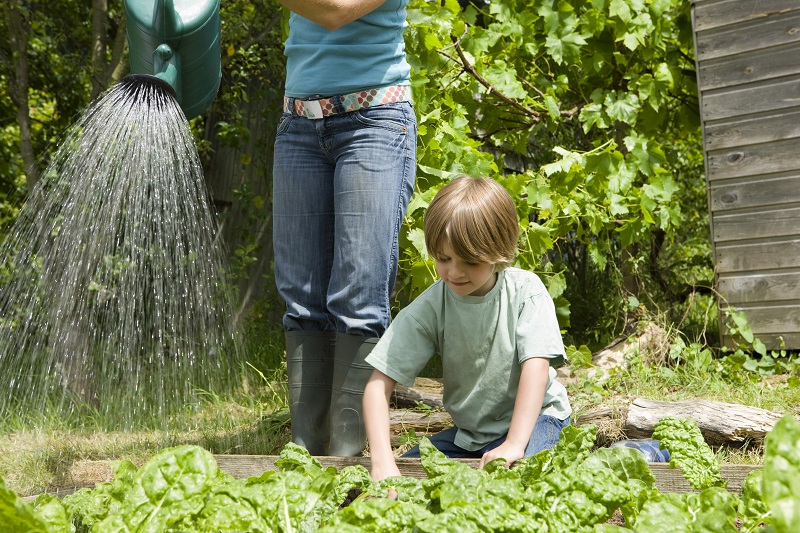
More Resources
Here are some interesting kids gardening resources ... and since you can buy online and get it delivered, that takes even more stress off you.
Buying your products online here on these links will usually save you on retail prices and may even include free shipping to your door sometimes.
Read the customer reviews here to save time and legwork when comparing products.
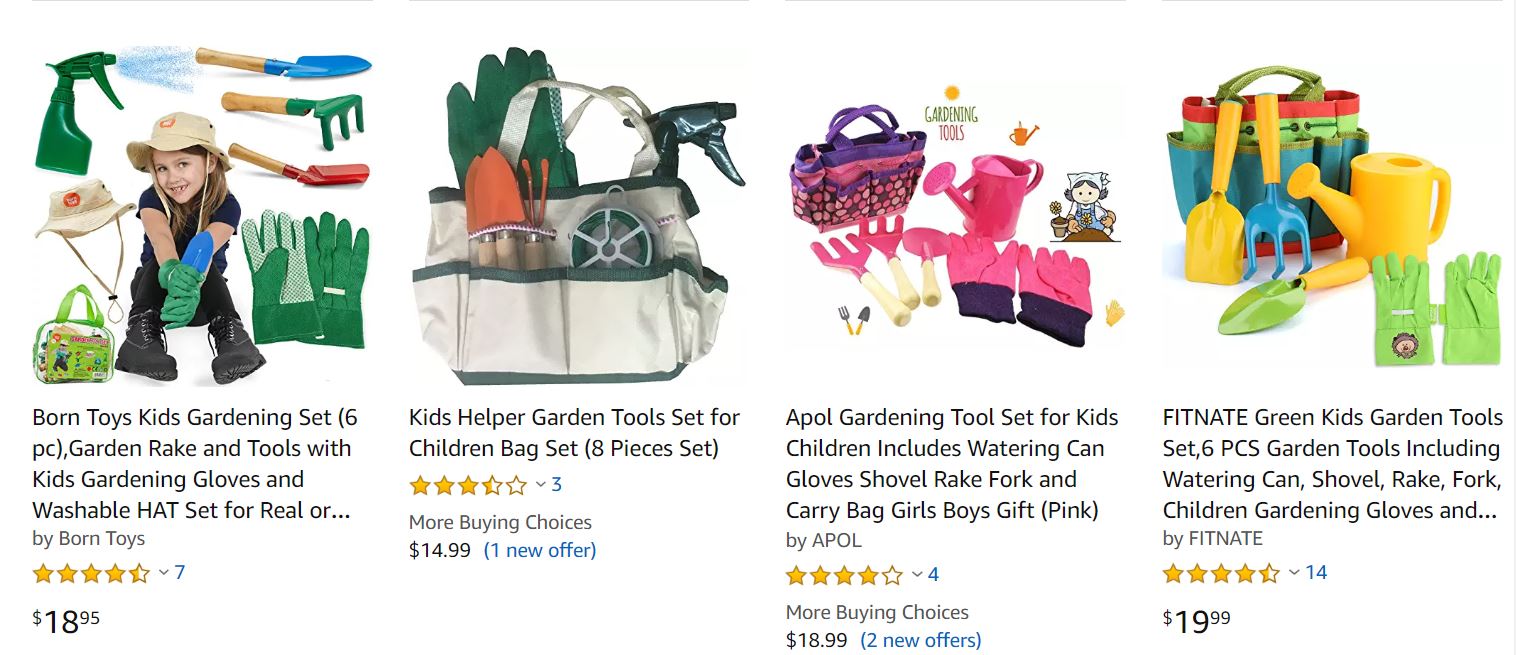
Check out some of the range of kids gardening resources HERE > > that you can get delivered to your door!
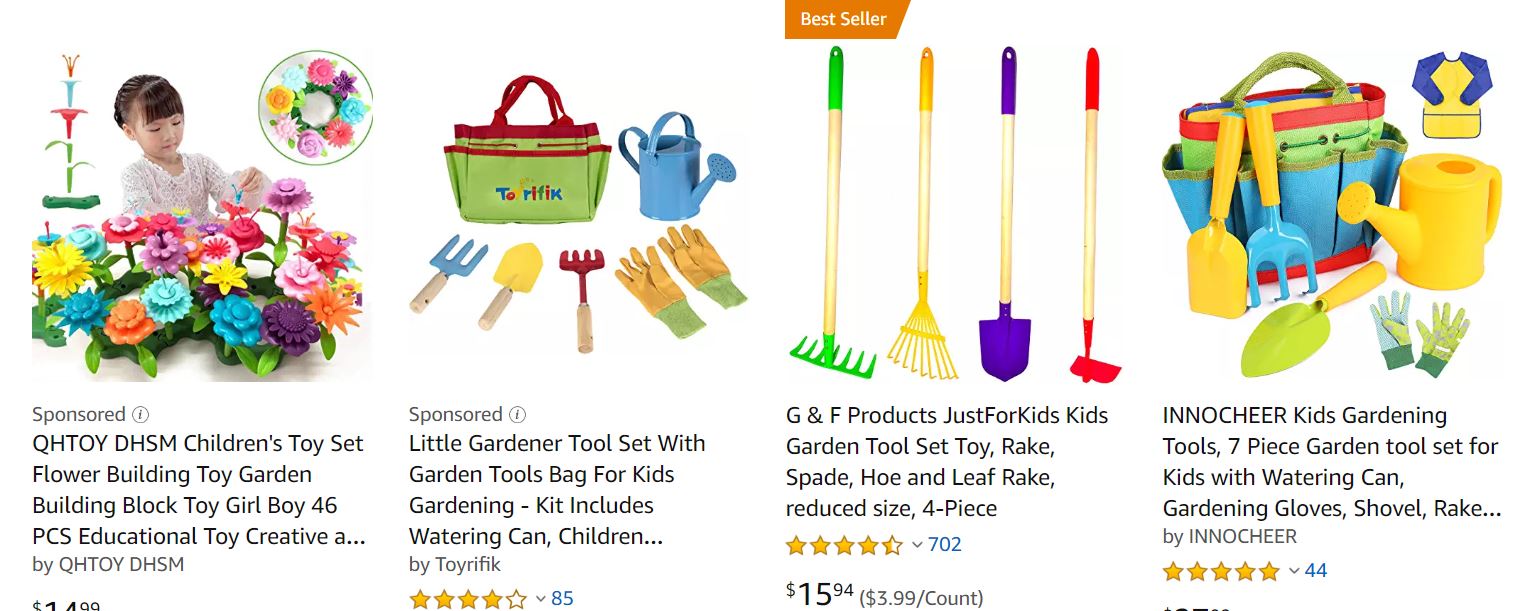
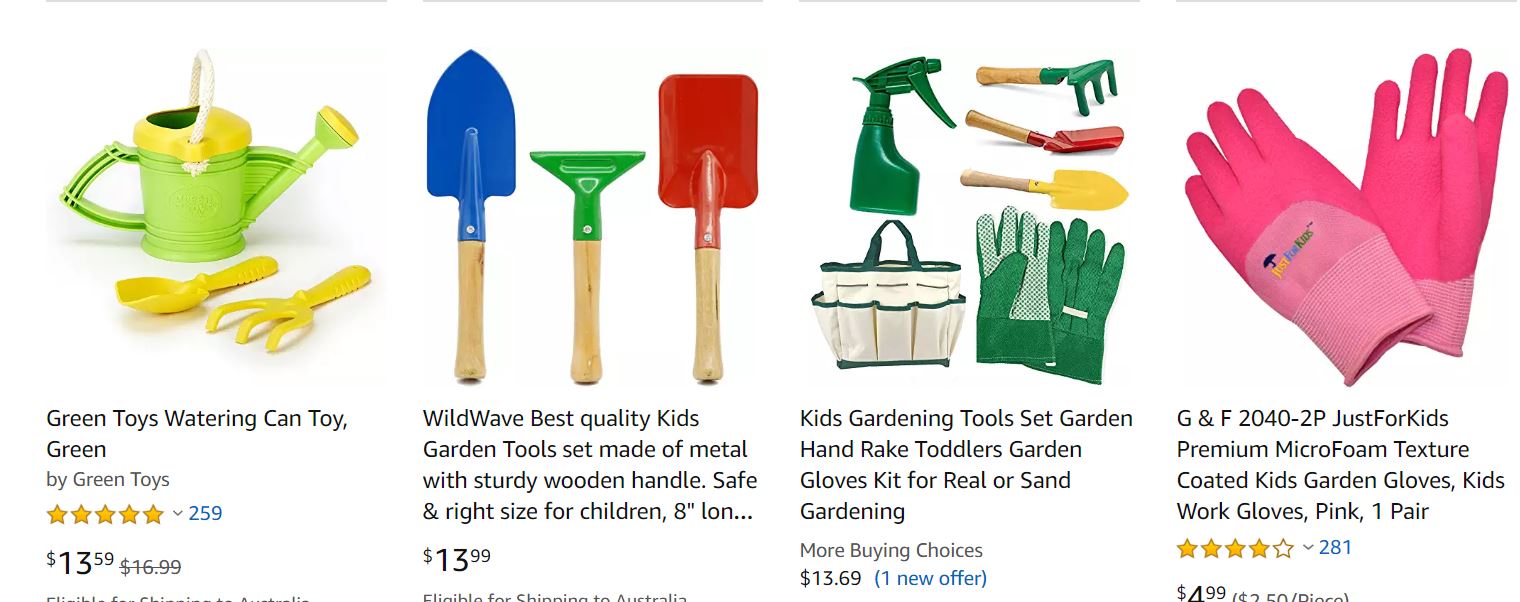
Below here I'm featuring more pages with helpful how-to-do-it tips on this subject.
Feel free to submit your own story or article about it, and I will create your own page here with your contribution for the community to read.
Latest Tips for How To Do It Yourself: Gardening
Do you have a tip you want to contribute here? Share it!
Read the latest updates & how-to tips here:
Click below to see the latest how to do it tips and contributions to this page...
Making It Easy for Kids to See the Wildlife
It's time to get the kids outside. Stop allowing them to sit in front of the screens and live in a virtual reality world and give them a place to explore …
Growing a Wildlife Garden
There are many purposes for growing a garden. As a hobby, as a way to save on your food bill, or even just to add appeal to your yard.
Did you ever …
Family Friendly Gardening Crafts
You have been out in the garden all day with the kids. Or maybe it's a rainy day and you can't get out to work in the garden.
Or perhaps you have just …

"Power Tips" magazine is back!
You Get A Free Complete Self Help Report delivered to your email box every edition, plus you get a free PLR article and other great gifts!
SUBSCRIBE BELOW ... I promise you will want to USE what you learn!
I really want to know what you think of this site, this page, and to hear your tips or suggestions about it.
So please share your story or simply add a Comment in the comment box.
If you feel that the information on this page has been useful to you please give it a Like or share it with your friends - thanks!!
"You are a life Saver!!
I recently discovered this site and I can tell you that my life has not been the same. I now come here EVERYDAY and spend at least 1 hour.
I used to spend that time browsing online fashion and beauty
magazine which just means that I spend more. Now I have replaced that
habit with coming here.
In future I will think about contributing articles as well. Thank you! Thank you!! Thank you!!! and God bless"
Contact Us | About Us | Terms of Use | Privacy Policy | FAQ | Testimonials
Amazon and the Amazon logo are trademarks of Amazon.com, Inc. or its affiliates. As an Amazon Associate I earn from qualifying purchases. Product prices and availability are accurate as of the date/time
indicated and are subject to change. Any price and availability
information displayed on [relevant Amazon Site(s), as applicable] at the
time of purchase will apply to the purchase of this product.
Back to HOME PAGE of this Kids Gardening Tips section of the site.








New! Comments
Have your say about what you just read! Leave me a comment in the box below.